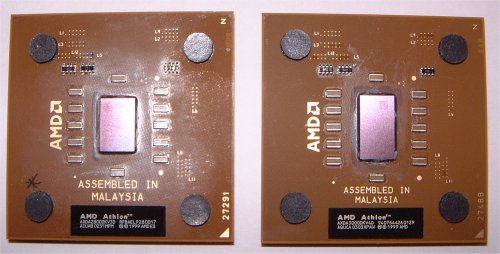Introduction
The Barton takes over the crown as AMD’s spearheading processor core. It’s construction is very similar to the THOROUGHBRED, using the same 0.13 micron silicon wafers and 128k Level 1 cache. So what has changed? The most significant enhancement is the inclusion of a 512kb Level 2 cache which is increased from the 256kb of the thoroughbred. This brings the Barton up to the cache levels of the Intel P4 Northwood’s.

As you can see from the photo above the Barton core (right) is wider than the Thoroughbred (left). Other than size nothing much has changed physically. Both have the same bridges and resistors on display.
So if the only real enhancement is the cache what difference would we expect to see?
Level 2 cache is located within the chip ensuring the fastest possible transfer times. This is cache used to temporarily store instructions and data to ensure the processor has a steady supply of data to process until main memory catches up.
Level 1 cache is the fastest memory available to the processor closely followed by level 2. Presumably the die is larger simply to accommodate the additional memory. This means that a larger L2 cache should enable the processor to work harder because there is always a steady stream of work for it stored in the cache, thus increasing its ability to process information more quickly. Add this to the fact that the processor has more high speed memory on hand to utilise during calculations and we should see a significant improvement in performance for processor intensive tasks from the Barton core.









